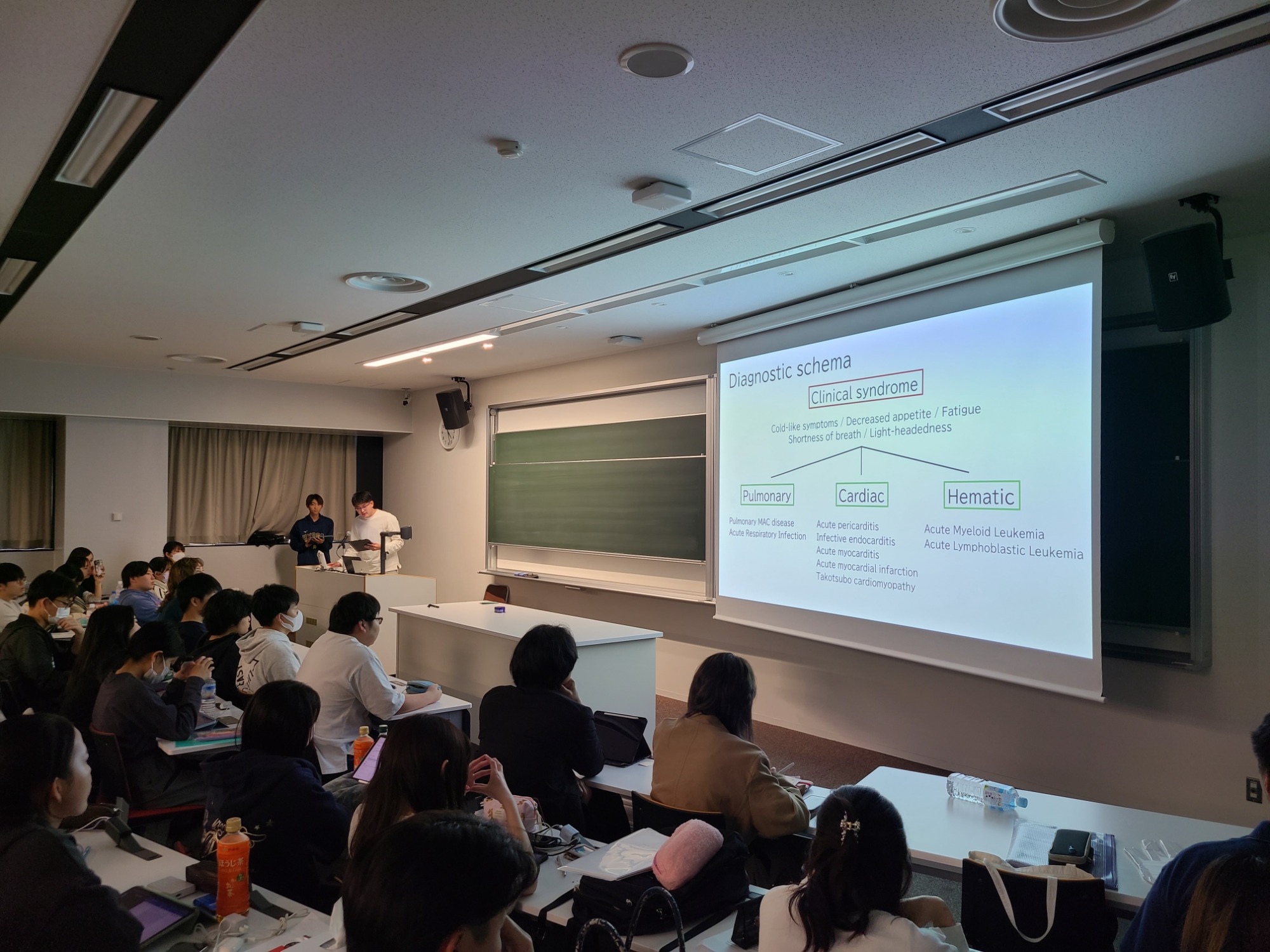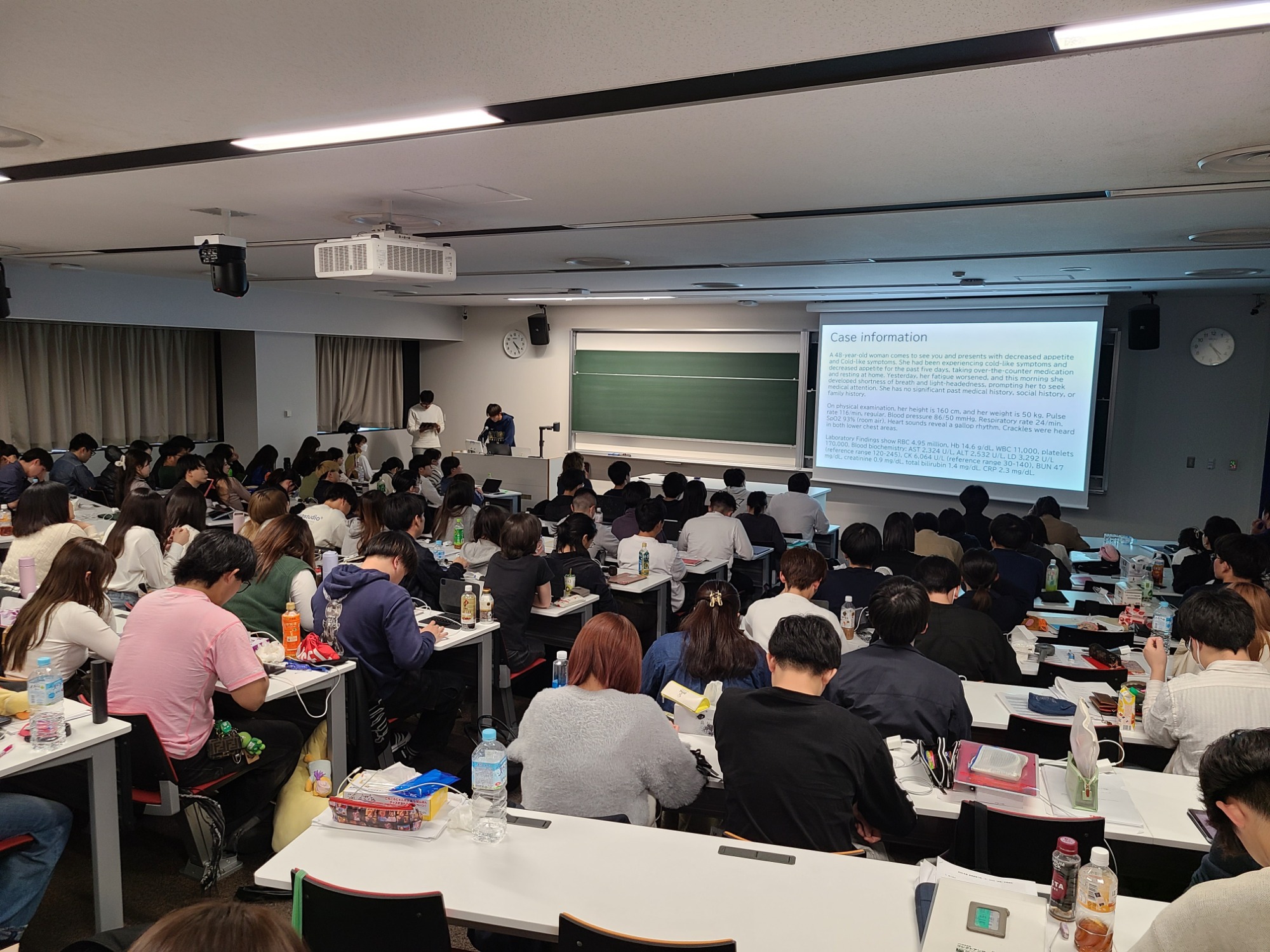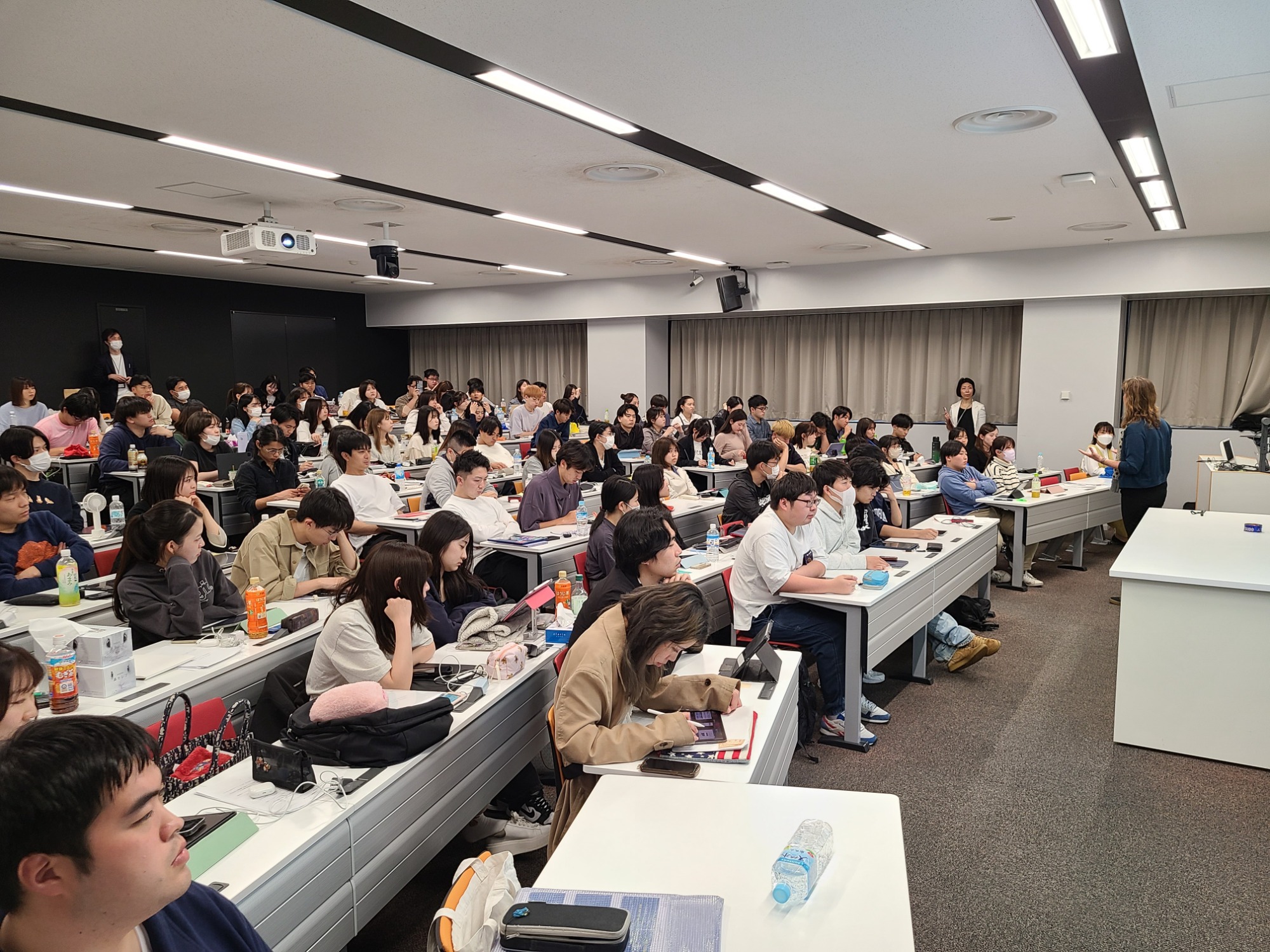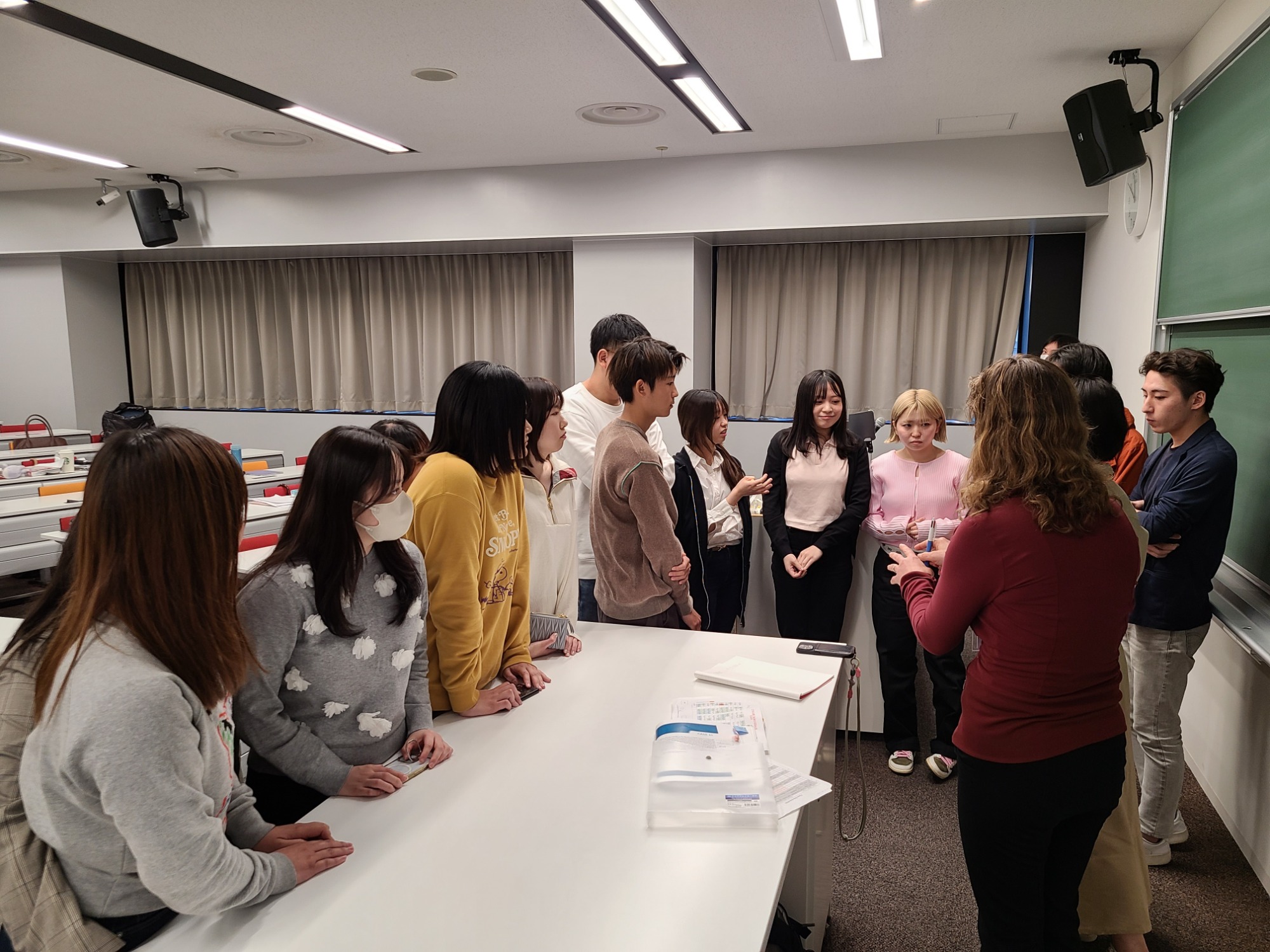Undergraduate and Graduate School
Clinical Reasoning in English (4th year)
"Learning Clinical Reasoning in English" is a course that aims to equip students with the "clinical reasoning skills" required to work as a doctor in the future, which are the ability to "narrow down illnesses based on the symptoms and signs reported by patients." The course consists of eight classes, and one of its features is that all classes are conducted in English. By handling clinical cases in English and conducting all discussions in English, the course aims to equip students with not only clinical reasoning skills, but also the communication skills necessary to treat patients from other countries.
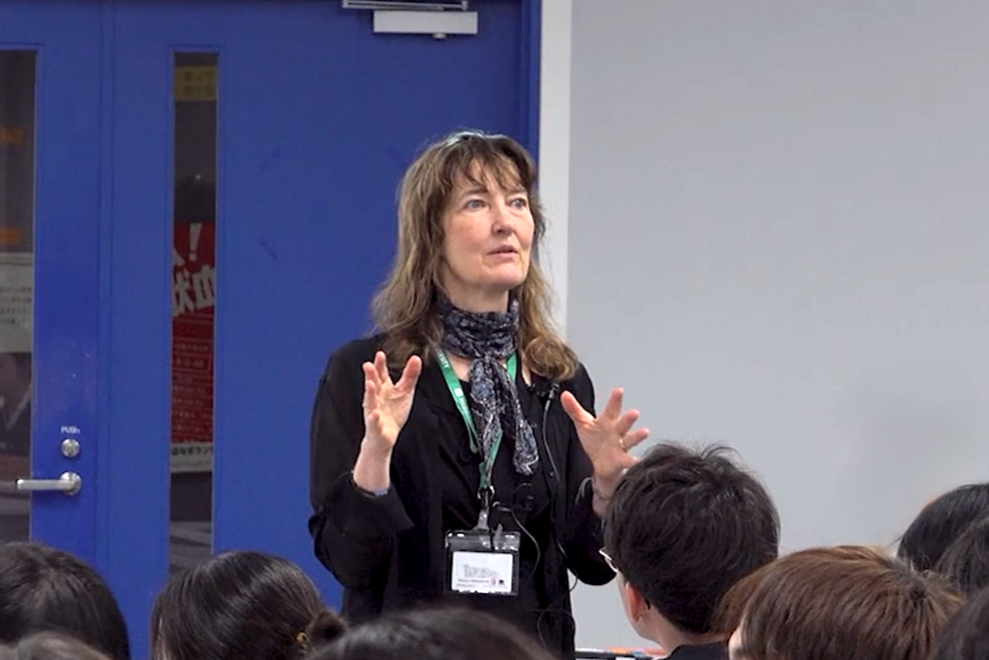
Visiting Professor Rebecca A. Harrison
Point 1: Lecturers include physicians who have experience in medical education in the United States
The lecturer in charge of the class is an internist and other experienced in various aspects of medical education in the United States.
Point 2 A curriculum that develops the ability to make differential diagnoses in English
In the first class, students are given the task of summarizing a case, narrowing down the disease causing the symptoms, and presenting the basis for their diagnosis, all in English. Through this assignment, students communicate their thoughts in English through trial and error, and acquire the skills of differential diagnosis.
Photo Gallery (Classroom Scenes)
Student comments (2024)
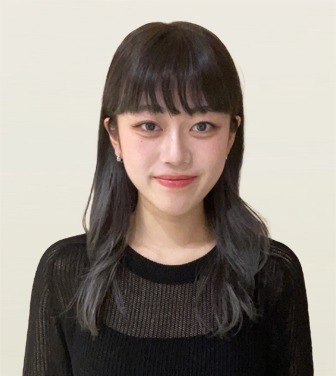
4th year student, Kazuka Nishijima
"Clinical Reasoning in English" was the first class in which we discussed cases that we would normally only discuss in Japanese in English.
In previous English classes, students mainly listened to the teacher talk, but in this class, students had many opportunities to raise their hands and speak, and by actively participating, they were able to deepen their learning.
Although I was unable to understand the clinical cases at first, I gradually became able to hear and understand them as I took each class.
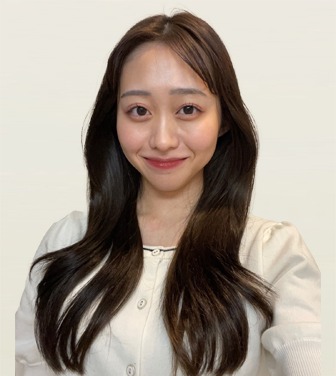
4th grade student Rina Yasuoka
This is a participatory class conducted entirely in English, and students' independence is evaluated. Students can raise their hands to answer the teacher's questions and receive a card, and the number of cards they receive reflects their participation and is reflected in their grades. In addition, the group assignment, in which students were asked to identify the disease from a given clinical case and then compile and present the process on a slide, helped improve their clinical reasoning skills.
*Grades are those at the time of the interview.
